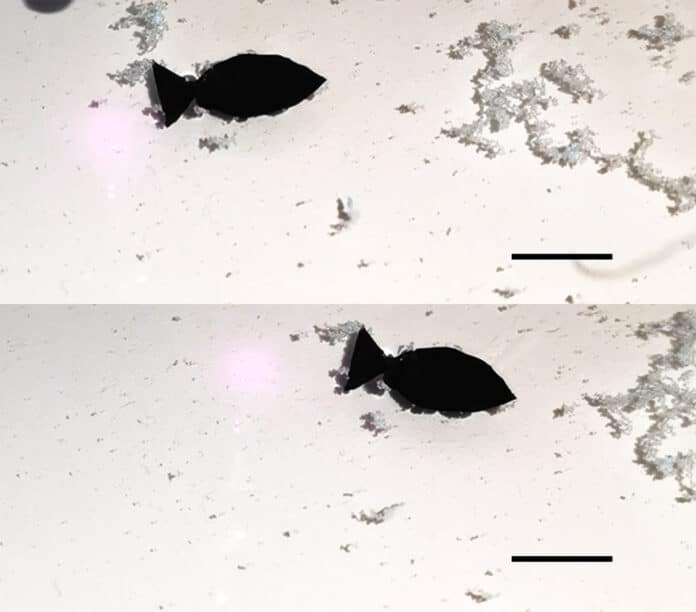Plastic pollution has become a very visible issue – but one of the most intractable forms of ocean pollution is harder to see: microplastics. Microplastics are found nearly everywhere on Earth and can be harmful to the environment and the health of living organisms. It is hard to remove this litter from the environment, especially once they settle into nooks and crannies at the bottom of waterways.
Now, researchers in China have created a light-activated fish robot that “swims” around quickly, picking up and removing microplastics from the environment.
Soft robots are usually made of hydrogels and elastomers that can be damaged easily in aquatic environments. So the researchers turned to another material called mother-of-pearl, also known as nacre, that is strong and flexible and is found on the inside surface of clam shells. This material has a microscopic gradient, going from one side with lots of calcium carbonate mineral-polymer composites to the other side with mostly a silk protein filler.
Researchers were inspired by this natural substance to create a durable and bendable material for soft robots. They linked β-cyclodextrin molecules to sulfonated graphene, creating composite nanosheets. These nanosheets were incorporated with different concentrations into polyurethane latex mixtures and then assembled layer-by-layer to create an ordered concentration gradient of the nanocomposite that allows the structure to be flexible, hard, and have a certain load, which attracts microplastics. After creating a 15mm-long piece of the material, the team shaped it into a fish, resulting in a tiny robot the size of a fingernail and very thin, which could fit through cracks and tight spots.
Rapidly turning a near-infrared light laser on and off at a fish’s tail caused it to flap, propelling the robot forward. The robot could move 2.67 body lengths per second – the team says this is a faster speed than similar soft swimming robots and around the same speed as active phytoplankton moving in the water.
Through their experiments, the researchers showed that the swimming fish robot could repeatedly adsorb nearby polystyrene microplastics and transport them elsewhere. The material could also heal itself after being cut, still maintaining its ability to adsorb microplastics. Because of the durability and speed of the fish robot, the researchers say that it could be used for monitoring microplastics and other pollutants in harsh aquatic environments.
The researchers say their nanostructural design will also offer an effective extended path to other integrated robots that require multifunction integration.
meta: Researchers in China have created a light-activated fish robot that “swims” around quickly, picking up and removing microplastics from the environment.
